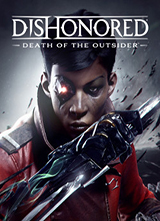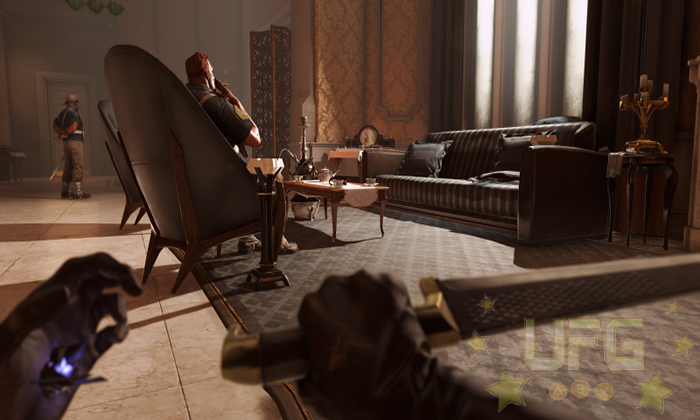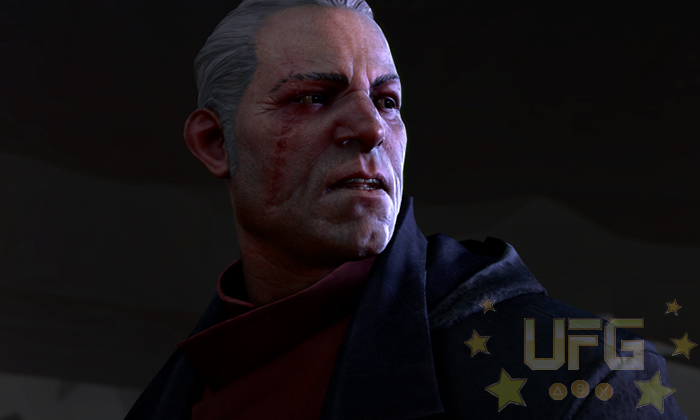Dishonored: Death of the Outsider
The Dishonored series is known for empowering the player. This was done by utilizing multiple systems that would alter the world based on our choices during different events. The biggest example of this came by way of the chaos system, which tracked how many characters were slain over the course of the game. Killing everyone standing in your way or opting for a more humane way of dealing with enemies meant the difference between a negative or positive ending.
While this was deemed a good thing by critics and fans alike, I have always felt that Arkane was being a bit unfair. That the sense of urgency I had in how the plot unfolded was corrupted by the chaos system for two main reasons. The first was that the world was negatively impacted by killing people; the higher levels of chaos didn’t just give you a bad ending, it made the game more difficult. The second reason was this notion of a “good ending” …which, if you look closely, means true ending. This is evident in Dishonored: Death of the Outsider as the entire premise was made possible by one of the endings of Dishonored: The Knife of Dunwall – Billie Lurk’s current behavior and personality is directly tied to that expansion’s level of chaos…
Basically, there was never a choice. I mean, you can choose your own path. But there was pressure, psychologically/subconsciously to push you towards a certain play style. At least, that’s the way I felt – who doesn’t want to see the “real” ending when playing a game – which is why when I learned that Arkane had removed the Chaos system in Death of the Outsider, it was freeing. I still made morally sound choices that ultimately affected the story. But I felt better about making them; there were no arbitrary mechanics “forcing” me to do “the right thing”. The difficulty didn’t change if I chose to kill someone or couldn’t find a way to get rid of them without killing them. Just a change in a newspaper clipping, a change in the guards. But nothing that made things so difficult that it hindered my enjoyment of the game. No increased infestations of rats or blood flies.
Other changes, like removing the need to find magic elixirs and granting every ability upfront, supplements this new found freedom. Instead of focusing on gaining certain abilities, I was able to more immediately concentrate on the mission at hand. Taking down the Outsider is a lofty goal. That’s not to say our protagonists, Billie Lurk and her mentor Daud, aren’t talented assassins. It’s just that the Outsider is like a God – he’s the one who’s been bestowing dark magic to select individuals for centuries. Thankfully, a cult called the Eyeless worship the Void (the place where he resides). They’ve compiled all sorts of artifacts, ancient text, and more in hopes of one day meeting the Outsider. It’s possible that they also know how to kill him or at the very least, found a way to reach the Void. Infiltrating their secret meetings and learning all I could was a tricky, yet entertaining endeavor thanks to some of the game’s new abilities.
Billie’s bread and butter is the Displace ability. Similar to Blink, Displace allows her to teleport a short distance away. The difference though, is that it creates a marker that needs to be placed in the environment. What’s great is that Billie can teleport to the marker even if it means going through solid objects; as long as she has line of sight on the marker she can teleport to it. The trick is to find a way to place the marker on the other side of these objects. This is where another ability called Foresight comes in. Using it will cause you to safely “ghost” around the level, spectating where all of the nearby enemies are for a few seconds. It can also place a marker in areas your physical body can’t get into. For instance, it’s possible to use Foresight to move through a vent into a locked house and place a marker inside a bedroom. You could then use Displace to teleport through the bedroom’s window, even though there are bars blocking your access.
My favorite ability is called Semblance. This one allows you to take the face of a living NPC (after knocking them out of course), disguising yourself in hopes of entering an otherwise, inaccessible area. The catch is that if someone sees you attacking someone, the person’s body who’s face you stole is found, or if you switch abilities you’ll blow your cover. Not only that, but it constantly drains power. Meaning, you’ll need to get where you’re going in the fewest steps possible.
These powers help to sidestep some of the obstacles found in other Dishonored titles. To keep things challenging, Arkane thought up some interesting problems for Billie to solve. Environments are littered with guards, traps like electric floors prevent easy access to objectives, and interesting architecture make maneuvering around without being seen difficult. Curve balls like dogs who can sniff you out even when using Semblance are thrown in from time to time. All of it cultivates an engaging experience – where the going can get tough but in a way that allows you to seek out unique solutions using all of Billie’s powers.
Stealthy traversing seedy environments while searching for clues and dispatching enemies is as entertaining as ever. Even more so thanks to the removal of the chaos system. I only wish the story wasn’t so ambiguous. By the time the credits rolled, I knew the gist of what was going on and why Billie sought out the Outsider, but I still had a lot of unanswered questions. For instance, I found out how the Outsider came to be but not the why. And the why is really important because it acts as one of the supporting elements that holds up the story; the entire Dishonored universe hinges on what happened to this character. Not explaining things completely makes the ending(s) feel less impactful. Your final choice will make sense for the most part but it won’t matter as much as it could have if this missing information was present.
It’s ironic how vague I have to be in hopes of not spoiling anything, while criticizing how vague certain parts of the story are. The truth is though, the expansion wasn’t created just for gamers to don the shoes of Billie Lurk. I assume it was also created to shed some light on the more enigmatic elements of the Dishonored world. Namely the Outsider. Now to be fair, it’s possible that I missed some lore found in a discarded note or a random book. That said, I shouldn’t have to search through archives to find clarity on an important plot point. Death of the Outsider is definitely still worth checking out of course. It just isn’t a great as it could have been!
Gameplay:
9
Dishonored: Death of the Outsider encourages player agency in ways that the other Dishonored games couldn’t. It’s an entertaining romp that is only hindered by a vague narrative.
Graphics:
7
The same as Dishonored 2: the stylized world and pastel colors work well together but the finer details struggle to stay in focus.
Sound:
10
The voice work and music were great, again.
Replay Value:
8
Complete the game once and you’ll unlock a Game + mode that allows the use of powers featured in Dishonored 2. This in turn creates a reason to go back through the game; you’ll be the most powerful character besides the Outsider.
Final Score:
8.5



